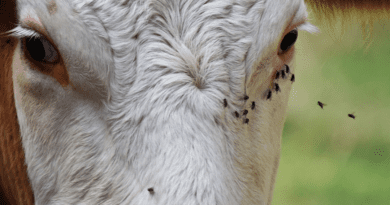Determination of Body Weight in Small Ruminants
In the determination of body weight in small ruminants, proper measurement of live body weight, which often is hard in the village settings due to lack of weighing scales, is a prerequisite for achieving so many lofty goals that are always associated with either medical or economic status of the animals.
Knowing the live bodyweight of small and large ruminants is important for a number of reasons, such as for breeding, correct feeding and health (Slippers et al., 2000).
Apart from taking live weight of meat animals, researchers also use other parameters such as body length, width of pelvis, height at withers and chest girths in order to adequately evaluate live animals (Atta et al., 2004).
Under standard conditions properly calibrated livestock scales are the most accurate and consistent method for determining body weight. Under farm conditions however, where scales and records may be absent, it may be difficult to know the weight of sheep and goats (Abegazand Awgichew, 2009).
Some of these standard weighing scales coupled with their shortcomings are too expensive for most of small farmers (Mahieu, 2011). This has forced many farmers to rely on estimates of body weights using certain number of body characteristics which can be measured readily (Aladeetal., 2008).
Procedures for Estimating Weight of Small Ruminants
Weight band: Briefly, the weight band is wrapped directly behind the shoulder blade, down the fore-ribs, under the body behind the elbow and all the way around to the point behind the shoulder blade.
The ends of the weight band are overlapped on top, on the goat’s spine. Lastly, the resultant weight measurement is read off the weight band in kilograms.
Visual appraisal: Visual determination of the weight of animals is often faced by errors like using the same estimate for more than one breed of a particular species (Otoikhian, 2008). Body structure can be deceptive when estimating weight (Slippers etal., 2000).
For instance, Red Sokoto goats appear lighter than they actually are because of their light bones. Apart from bones and body structure problem in estimating weight, a white animal always looks bigger than it is (Otoikhian, 2008).
Body Linear Measurements: There are a number of linear dimensions which can be used to quantify the size of an animal and to estimate weight.
The most widely used body linear measurements include height at withers, heart girth, chest depth, body length, fore cannon bone, rump height, distance between eyes, ear length, ear width, paunch girth and tail length.
Heart girth and cannon bone length are least affected by the posture of the animal. Abegaz and Awgichew (2009) described the linear measurement as follows:
Height at Withers (HAW). This measures the distance from the surface of a platform on which the animal stands to the withers. The measurement is best made with a special measuring stick made with two arms one which is held vertical and the other at right angles to it sliding firmly up and down to record height.
The sheep or goat should stand squarely on all four legs. The legs should be equally spaced, and carry equal portions of its weight. The vertical arm of the measuring device is placed on the ground and ensures it is at a right angle to the platform.
Then the other shorter arm is slide down until it just touches the shoulder at the desired point. The vertical measuring device is withdrawn and the distance is measured with a measuring tape.
Alternatively, the vertical arm could have the measuring scale inscribed onto it and height read directly. This method can be used alone or in combination with the other linear measurements to get more accurate results.
Heart Girth (HG) or Chest circumference: Heart girth is a circumferential measure taken around the chest just behind the front legs and withers. The measurement should be taken to the nearest 0.5 cm. HG is a highly repeatable measure though it does vary somewhat with extremes of posture and perhaps as the animal breaths.

Body Length (BDL): Body length refers to the distance from the base of the ear to the base of the tail (where it joins the body). It can also be measured as the distance from base of tail to the base of the neck (first thoracic vertebrae), or to front of the chest or to tip of the nose. Extreme care is needed to ensure that the backbone is straight in both vertical and horizontal planes.
Hip Width (Pin Bone Width) (HW): Hip width is the distance between the outer edges of the major hip bones on the right and left side. The hip bones are easily located and the distance between them easily measured with a pair of large, half round or oval shaped callipers.
Rump Height (RH): Rump height is the distance from the surface of a platform to the rump using a measuring stick as described for height at withers.
Fore Cannon Bone Length (CB): This is the length of the lower part of the leg extending from the hock to the fetlock in hoofed mammals. It is a well-established fact that linear development of different bones in the body is strongly related.
a. Precautions while taking body linear measurements: Since the animal body movement and body posture can introduce errors into measurements and estimated weights, Abegaz and Awgichew (2009) suggested the following precautions to be taken in order to counteract these effects:
Read Also : Forage Conservation for Animal Feeds and Feeding
Chest Depth (CD): Chest depth measures the distance from the backbone at the shoulder (standardize on one of the vertical processes of the thoracic vertebrae) to the brisket between the front legs.
When possible, choose measurements that are little affected by the animal’s posture.
Standardize the position of all animals that are to be compared.
Be patient and wait for an animal to stand correctly.
Read Also : Household Hazardous Waste (HHW)









